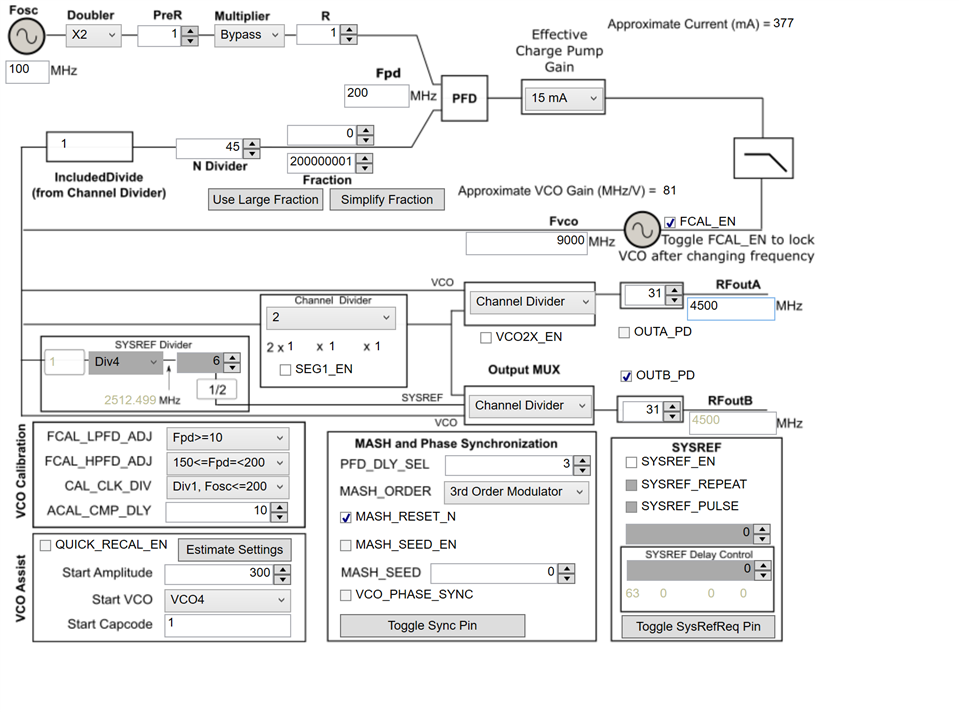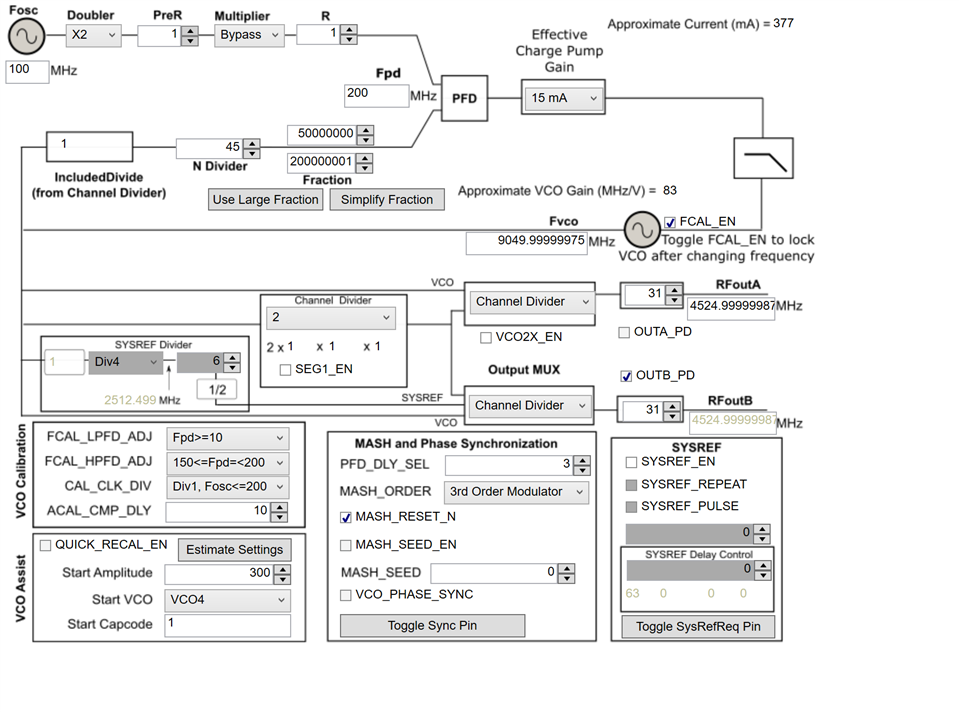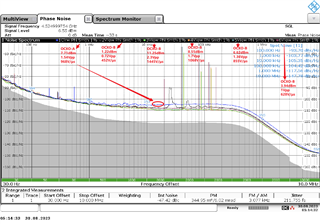Other Parts Discussed in Thread: LMX2595
Hello. We are testing the LMX2595EVM with two 100MHz OCXOs. The frequency of reference clock is 100 MHz and Osc_doubler of LMX2595EVM is enabled.
We found that when the LMX2595 is in integer mode and two OCXOs are used as reference sources, the phase noise of the LMX2595 measured at frequency offsets above 1kHz is basically the same. However, in fractional mode, enabling the Sigma-Delta modulator results in the degradation of phase noise for both sources, but to different extents. From the results, it appears that the Sigma-Delta modulator introduces different levels of phase noise depending on the reference source used, with less phase noise added for better reference sources. We would like to confirm if the Sigma-Delta modulator does indeed exhibit this characteristic.
Measured phase noise of two OCXOs and LMX2595 are as follows.
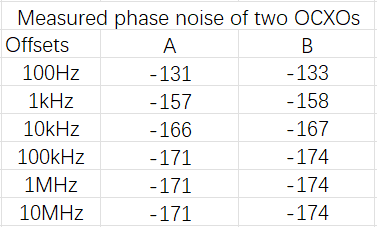
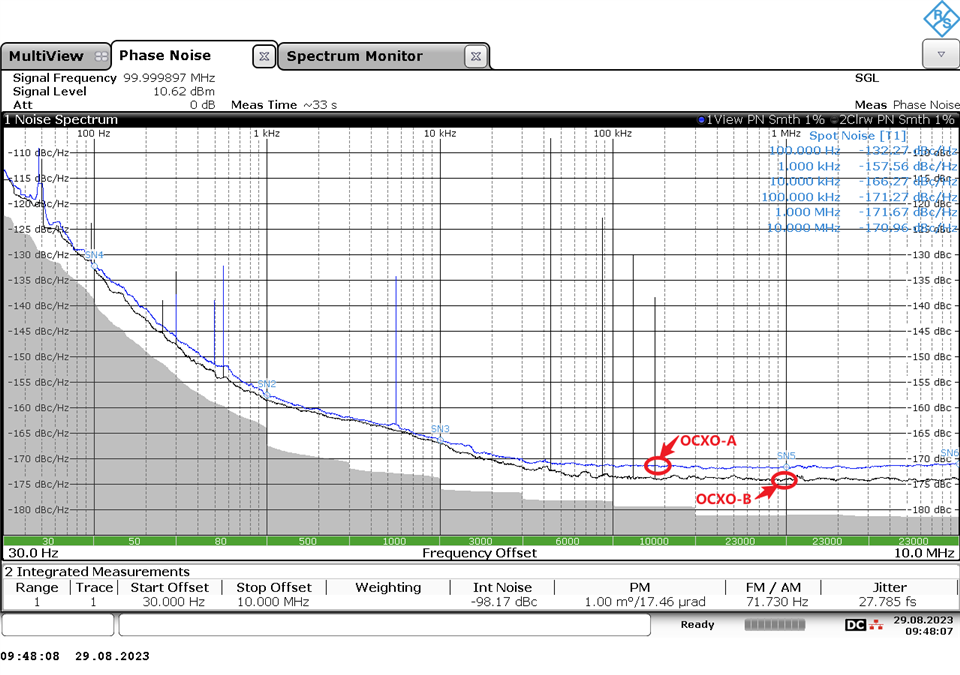

The configurations of TICS pro for the LMX2595 in integer and fractional mode are shown in the following figures.
